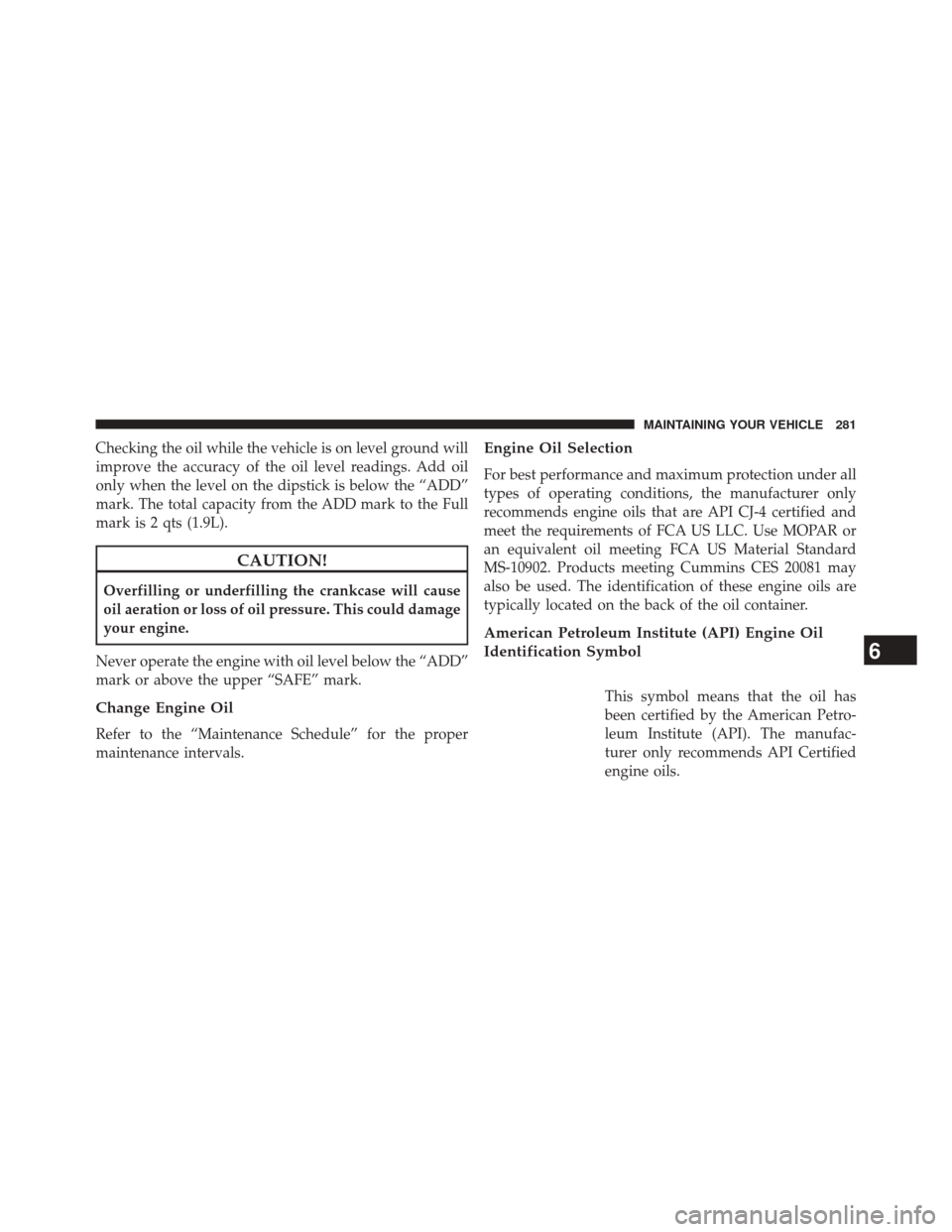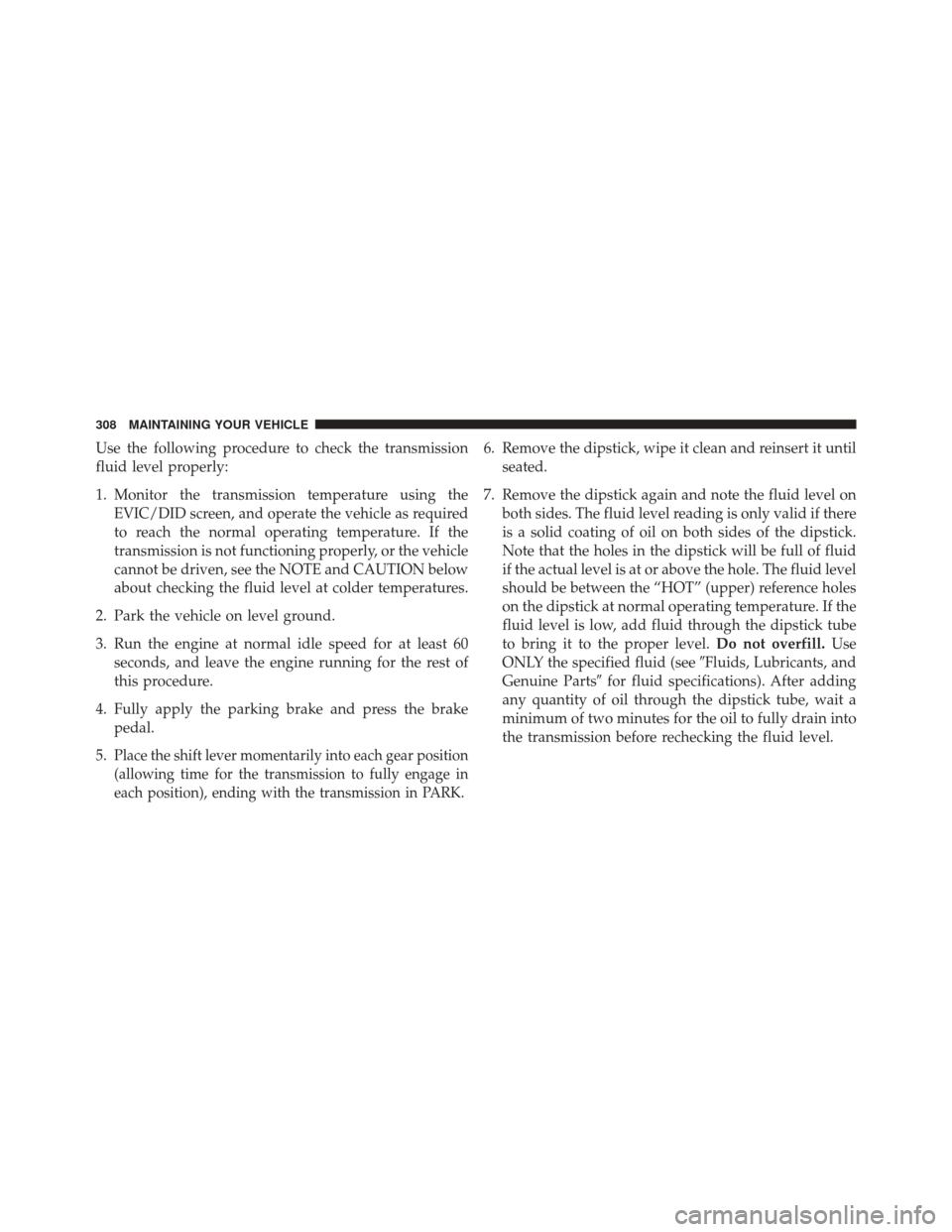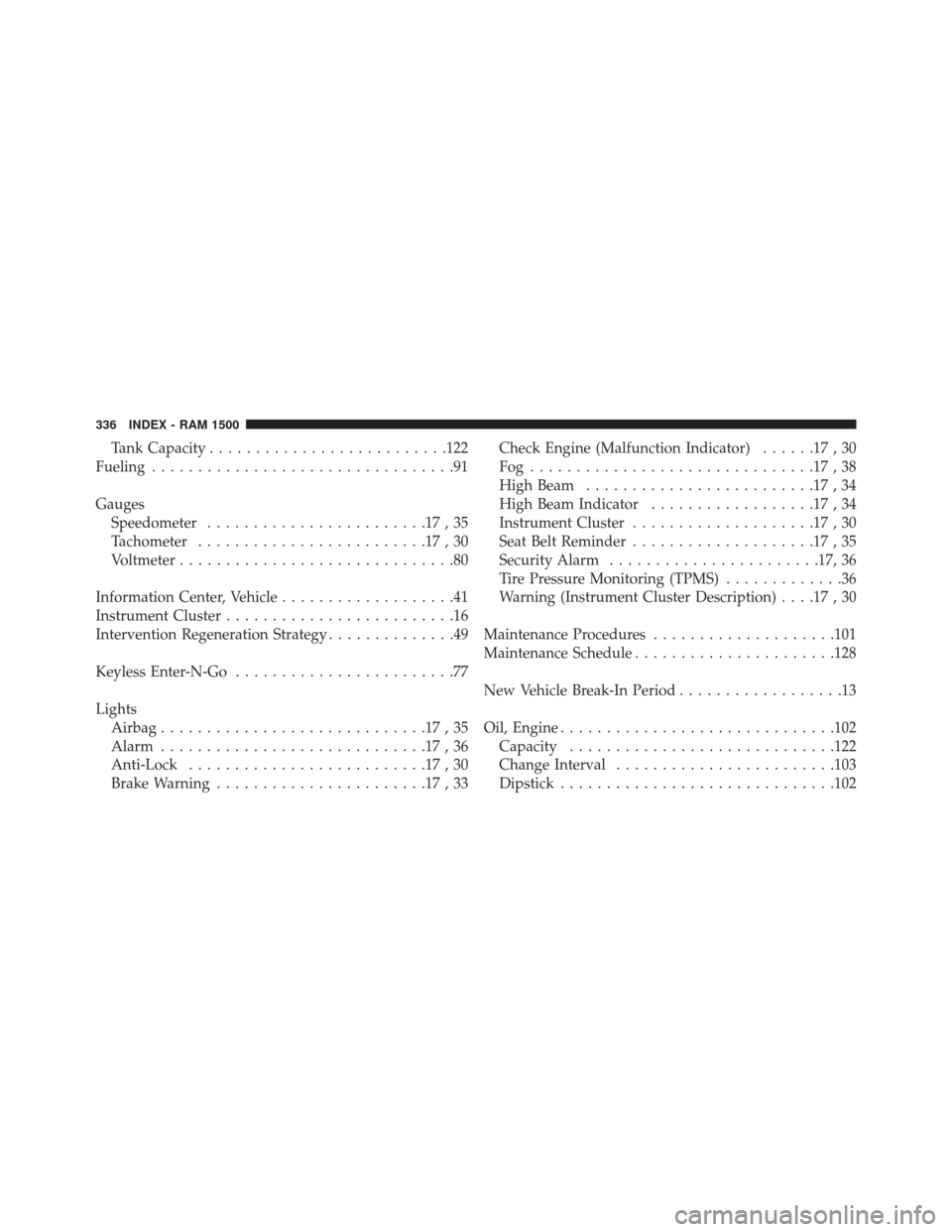Page 102 of 347
ENGINE COMPARTMENT — 3.0L DIESEL
1 — Air Cleaner Filter5 — Battery
2 — Engine Oil Dipstick 6 — Power Distribution Center (PDC)
3 — Engine Oil Fill 7 — Washer Fluid Reservoir
4 — Brake Fluid Reservoir 8 — Engine Coolant
100 MAINTAINING YOUR VEHICLE
Page 104 of 347
Engine Oil
Engine Oil Selection
For best performance and maximum protection under all
types of operating conditions, the manufacturer recom-
mends engine oils that meet the requirements of FCA US
Material Standard MS-11106, and that are approved to
ACEA C3.
Checking Oil Level
To assure proper lubrication of your vehicle’s engine, the
engine oil must be maintained at the correct level. Check
the oil level at regular intervals. The best time to check
the oil level is before starting the engine after it has been
parked overnight. When checking oil after operating the
engine, first ensure the engine is at full operating tem-
perature, then wait for five minutes after engine shut-
down to check the oil.
1 — MAX Mark
2 — MIN Mark
Checking the oil while the vehicle is on level ground will
improve the accuracy of the oil level readings. Add oil
only when the level on the dipstick is below the “MIN”
Engine Oil Dipstick
102 MAINTAINING YOUR VEHICLE
Page 279 of 347
ENGINE COMPARTMENT — 6.7L DIESEL — SIX-SPEED 68RFE (2500/3500 Models)
1 — Battery7 — Washer Fluid Reservoir
2 — Engine Coolant Reservoir 8 — Power Steering Fluid Reservoir
3 — Automatic Transmission Dipstick 9 — Power Distribution Center
4 — Brake Fluid Reservoir 10 — Engine Oil Dipstick
5 — Battery 11 — Engine Oil Fill
6 — Aux Power Distribution Center 12 — Air Cleaner Filter
6
MAINTAINING YOUR VEHICLE 277
Page 280 of 347
ENGINE COMPARTMENT — 6.7L DIESEL — SIX-SPEED AS69RC HD (3500/CHASSIS CAB MODELS)
1 — Battery7 — Washer Fluid Reservoir
2 — Engine Coolant Reservoir 8 — Power Steering Fluid Reservoir
3 — Automatic Transmission Dipstick 9 — Power Distribution Center
4 — Brake Fluid Reservoir 10 — Engine Oil Dipstick
5 — Battery 11 — Engine Oil Fill
6 — Aux Power Distribution Center 12 — Air Cleaner Filter
278 MAINTAINING YOUR VEHICLE
Page 282 of 347
Engine Oil
Checking Oil Level
To assure proper lubrication of your vehicle’s engine, the
engine oil must be maintained at the correct level. Check
the oil level at regular intervals. The best time to check
the oil level is before starting the engine after it has been
parked overnight. When checking oil after operating the
engine, first ensure the engine is at full operating tem-
perature, then wait for 30 minutes after engine shutdown
to check the oil.
Engine Oil Dipstick
1 — ADD Range
2—FullMark
3 — SAFE Range
280 MAINTAINING YOUR VEHICLE
Page 283 of 347

Checking the oil while the vehicle is on level ground will
improve the accuracy of the oil level readings. Add oil
only when the level on the dipstick is below the “ADD”
mark. The total capacity from the ADD mark to the Full
mark is 2 qts (1.9L).
CAUTION!
Overfilling or underfilling the crankcase will cause
oil aeration or loss of oil pressure. This could damage
your engine.
Never operate the engine with oil level below the “ADD”
mark or above the upper “SAFE” mark.
Change Engine Oil
Refer to the “Maintenance Schedule” for the proper
maintenance intervals.
Engine Oil Selection
For best performance and maximum protection under all
types of operating conditions, the manufacturer only
recommends engine oils that are API CJ-4 certified and
meet the requirements of FCA US LLC. Use MOPAR or
an equivalent oil meeting FCA US Material Standard
MS-10902. Products meeting Cummins CES 20081 may
also be used. The identification of these engine oils are
typically located on the back of the oil container.
American Petroleum Institute (API) Engine Oil
Identification Symbol
This symbol means that the oil has
been certified by the American Petro-
leum Institute (API). The manufac-
turer only recommends API Certified
engine oils.
6
MAINTAINING YOUR VEHICLE 281
Page 310 of 347

Use the following procedure to check the transmission
fluid level properly:
1. Monitor the transmission temperature using theEVIC/DID screen, and operate the vehicle as required
to reach the normal operating temperature. If the
transmission is not functioning properly, or the vehicle
cannot be driven, see the NOTE and CAUTION below
about checking the fluid level at colder temperatures.
2. Park the vehicle on level ground.
3. Run the engine at normal idle speed for at least 60 seconds, and leave the engine running for the rest of
this procedure.
4. Fully apply the parking brake and press the brake pedal.
5.
Place the shift lever momentarily into each gear position
(allowing time for the transmission to fully engage in
each position), ending with the transmission in PARK.
6. Remove the dipstick, wipe it clean and reinsert it until seated.
7. Remove the dipstick again and note the fluid level on both sides. The fluid level reading is only valid if there
is a solid coating of oil on both sides of the dipstick.
Note that the holes in the dipstick will be full of fluid
if the actual level is at or above the hole. The fluid level
should be between the “HOT” (upper) reference holes
on the dipstick at normal operating temperature. If the
fluid level is low, add fluid through the dipstick tube
to bring it to the proper level. Do not overfill.Use
ONLY the specified fluid (see �Fluids, Lubricants, and
Genuine Parts� for fluid specifications). After adding
any quantity of oil through the dipstick tube, wait a
minimum of two minutes for the oil to fully drain into
the transmission before rechecking the fluid level.
308 MAINTAINING YOUR VEHICLE
Page 338 of 347

Tank Capacity......................... .122
Fueling .................................91
Gauges Speedometer ........................17,35
Tachometer .........................17,30
Voltmeter ..............................80
Information Center, Vehicle ...................41
Instrument Cluster .........................16
Intervention Regeneration Strategy ..............49
Keyless Enter-N-Go ........................77
Lights Airbag .............................17,35
Alarm .............................17,36
Anti-Lock ..........................17,30
Brake Warning .......................17,33 Check Engine (Malfunction Indicator)
......17,30
Fog ...............................17,38
High Beam .........................17,34
High Beam Indicator ..................17,34
Instrument Cluster ....................17,30
Seat Belt Reminder ....................17,35
Security Alarm ...................... .17, 36
Tire Pressure Monitoring (TPMS) .............36
Warning (Instrument Cluster Description) . . . .17 , 30
Maintenance Procedures ....................101
Maintenance Schedule ..................... .128
New Vehicle Break-In Period ..................13
Oil, Engine ............................. .102
Capacity ............................ .122
Change Interval ....................... .103
Dipstick ............................. .102
336 INDEX - RAM 1500